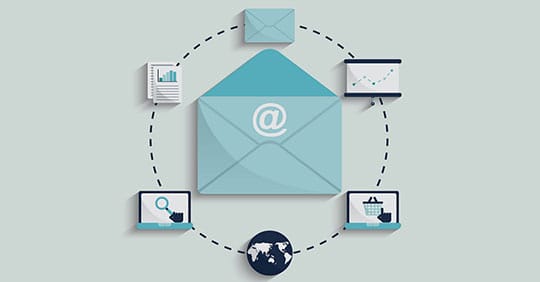With the field of eCommerce exploding and companies trying to do their best to keep up, it is vital to measure your success. It is one thing to develop and implement a plan and quite another thing to track your results.
If you want to really find out if your online marketing campaign is working then you need email statistics and other hard numbers that show you how successful your plan is. Read further to find out how to let our research and data gathering help you track the success of your online marketing campaigns.
Email List Building Statistics
Building a client or subscriber list is vital for an effective marketing campaign. No matter how great your emails are, how up to date your tools are, or how well thought out your strategy is, if you do not have a list of customers to send it to, they cannot be effective.
There are many ways to build a subscriber list, but it is vital to look at the statistics to understand which ones are worth your time.
Recommended for you: Email Marketing Guide for Startups – All You Need to Know!
Which Forms Work the Best for Signups

In the past, getting customers to sign up for an email consisted of putting a static box on one side of the page or the other and hoping that a customer filled it out.
After researching 20,000 forms and gathering data on their success rate, one thing was evident…A dynamic signup form is the most effective.
Dynamic sign-up forms can either be traditional popups (4.22% success rate), wheel of fortune popups (12.74% success rate), or a landing page (24.82% success rate). The bottom line is that the success rates are all markedly higher than the 1.28% success rate found in sticking with a static signup box.
Which field combination has the best signup rate?
Digging even deeper into the research, you can find which signup form fields produced the highest signup rate.
With an “email” field being a given, secondary fields were paired with an email field to find out the top three secondary fields in terms of success rate.
Coming as no surprise, a “Phone” field was the most effective at a 9.56% success rate. Having a customers phone number allows for SMS campaigns to be coupled with the dynamic form campaign.
In second place was a “First Name” field. Having a person’s first name allows for the marketing to be more personal and therefore more effective.
Coming in third place was a “Birthday” field. This allows marketers to send special deals on a customer’s birthday as well.
How much information should you ask for in email signup forms?
Ask for no more than two pieces of information on a signup form. You are really looking for an email address, so make sure any information past that is really important.
When should you send your marketing campaign?

You should send an email campaign when customers are most likely to be on their phones or computers without sacrificing traditional family time.
This means that lunch breaks, the end of the workday, and any other known break from work will be the best times to send a campaign. The key is to find times when people are at work but also are probably on a break.
Best months for open and click-through rates
November and December are the best months for open and click-through rates.
Best time of day to send emails
Whether it be first thing in the morning or around 5:00, the best time to send emails is when customers have a break from work.
Best day of the month to send emails
There is no specific “best day of the month” to send emails. The rule is closer to the beginning of a month, the better the timing for an email campaign.
Email marketing automation statistics
Order confirmation has a 59% open rate, a 16% click rate, and a 0.85% order rate. The order rate is low, but that is because it reaches customers who have just placed an order.
Cart recovery automation has a 47% open rate, a 10.5% click rate, and a 2.35% order rate.
Welcome automation has a 51.5% open rate, a 15% click rate, and a 2.24% order rate.
Customer reaction automation has a 42% open rate, 8% click rate, and a 2% order rate.
Custom automation has a 53% open rate, a 17% click rate, and a 1.8% order rate.
Single email vs. a series of emails
You should use a series of emails only at specific times of the year. When a person subscribes, on their birthday, or when there is a special event are the best times to send series.
In almost all other occasions, however, a single email is more effective if it is done correctly.
Which kind of email automation performs best:

In terms of email automation, the statistics can take you in a few directions.
For open rate, an order confirmation is the highest and the second-highest in click rate.
In terms of order rate, cart recovery automation places first with welcome automation placing a very close second.
In fact, while you cannot go wrong with any of the email automation options, the welcome automation seems to be the most successful across the board.
Conclusion/key takeaways
Based on the email statistics presented above, there are some key takeaways for anyone interested in using email marketing.
- According to the research, it is clear that a multi-channel approach, and specifically using more than three channels, leads to better overall performance.
- Customers who are engaged by an Omnichannel approach, on average, spend about 13% more.
- Dynamic signup forms work far better than static ones; the results improve even more when those dynamic forms are targeted.
You may also like: Email Marketing Tips: How to Make Your Email Marketing Stand Out?
Email Marketing Statistics You Need to Know in 2019 (Infographic)

Infographic source: Omnisend.
This infographic is provided by Parth Mavani. He is nurturing his future at Social Media Dominates as Chief Editor. He is Passionate Writer, Critical Thinker, and Football fan. Parth loves to roam at endless roads in his free time. Follow him: Twitter | Facebook | LinkedIn.






